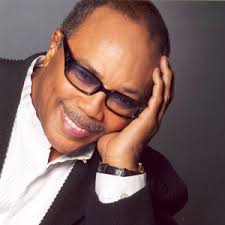Recording Engineer Extraordinaire over Four Decades
A career that has impacted Jazz, Pop,Blue, R&B and Soul to the Signature Sound of Michael Jackson.



 |
| Bruce Swedien |
Bruce was born in Minneapolis, Minnesota in 1934 to Scandinavian
parents. His mother was a member of the Minneapolis Symphony Women’s
chorus, which had a strong influence on his choice of career in the
music industry. His passion for music developed, as he listened to the
powerful and soulful sounds coming out of a black church in the
neighbourhood where he grew up. By the time he graduated from high
school, Swedien had purchased a professional tape recorder and used the
equipment during his spare time from the the University of Minnesota to
record jazz groups, radio commercials and vocal groups such as
choirs.
 |
| Quincy Jones |
He was mentored and trained by the father of modern recording
Bill Putnam, the founder of the world famous Universal Recording
Studios in Chicago where Bruce developed his engineering skills to
great effect and made himself a key figure in the evolution of sound
recording from mono to digital recordings. Putnam passed the baton
during actual recording sessions with the great Stan Kenton
.
With his new-found success, Bruce’s client base increased to
significant levels and included working with two jazz legends, the late
Duke Ellington, on a couple of albums and Count Basie and his band,
which featured Joe Williams,
on “The Nighttime Is the
Right Time”. During this period Bruce started a long-term creative
relationship with Quincy Jones, beginning in the late 1950s when Quincy
was vice-president at Mercury Records, the first black man to be a top
executive for a major label.
As a result of his links with Quincy Jones, Bruce participated in
engineering projects with jazz greats such as Sarah Vaughan and Oscar
Peterson on the Mercury/Verve label based in Chicago. His first
significant project with Quincy was Dinah Washington’s “What a Different
a Day Makes”, using the latest technology available at the time. He
also recorded standards with Nat Cole King and Patti Page, under the
supervision of Putnam before he went solo as an engineer. Bruce became a
key player in the development of the Blues sound which arrived in
Chicago from the Mississippi Delta, brought by Muddy Waters, Willie
Dixon, Jimmy Reed and others
Researched and compiled by
Mr K Tomlin Music Historian
©RCM Music/Signaturesoundsonline2013-2014

No comments:
Post a Comment